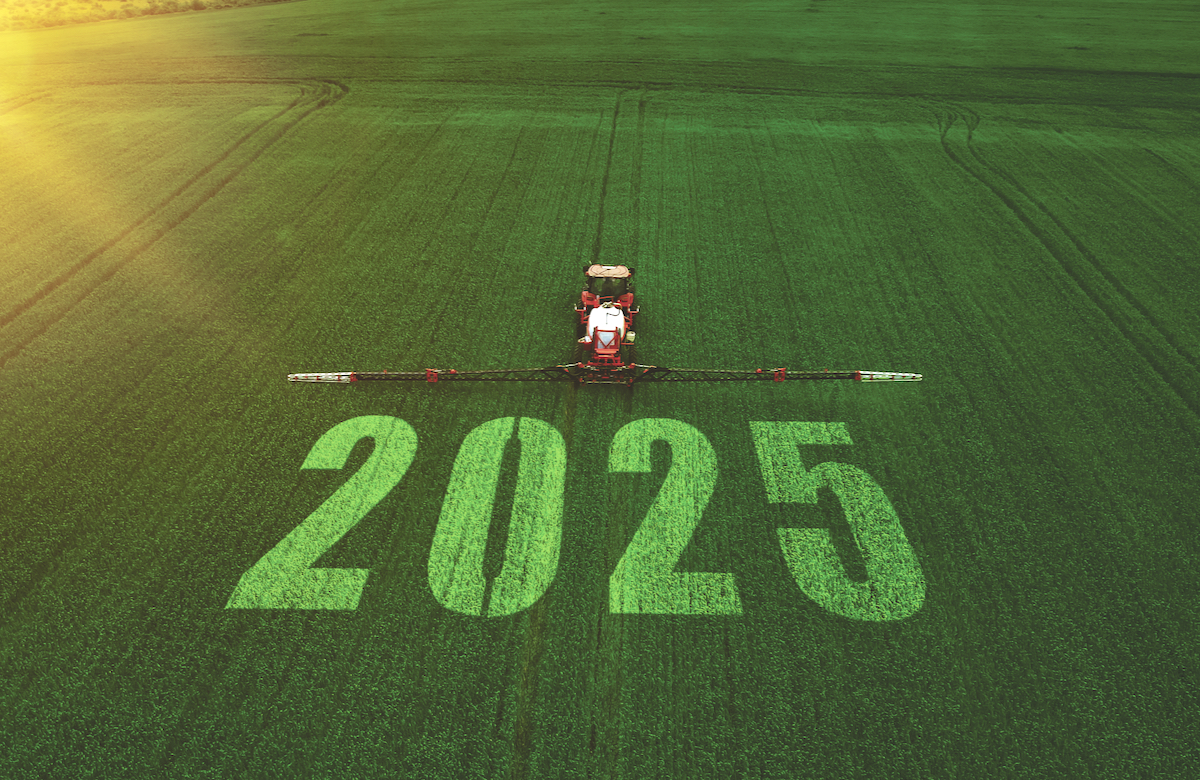Ah, the optimism a new year brings.
An invisible line drawn in your mind’s eye between the last year and next as you flip open a fresh calendar. (Or, if you’re younger than me, scroll to the next month on your phone’s calendar app). Your eyes sparkle with eagerness, you drum your fingers in anticipation, your mind races with all the things you’re going to implement or accomplish.
And then, you don’t.
Read Also

The big squeeze: How to be fair to siblings during farm succession
Managing sibling business relationships on family farms.
Setting goals is easy; achieving them is hard. Why is that?
Turns out there are two components to goal setting and habit formation. There’s the motivational aspect (the “will”, i.e., your desire to accomplish, which can be tied to who you want to be) and the cognitive (the “way”, i.e., how you’ll accomplish the goal). Behaviour change typically requires both. It’s not just about the goal itself, but the behaviour that drives the “want” to reach the goal.
Frank L. Smoll, a psychologist at the University of Washington, says there are three essential features of a goal: goals need to be achievable, believable and we must be committed to seeing results.
A deeper dive into goal pursuit science shows that we also need to have the right skills, capacities and knowledge to consistently chip away at achieving a goal. Put more scientifically, “This includes mapping out the steps to take and having the skill to execute an action, as well as related cognitive processes such as attentional focus, inhibitory control, and working memory capacity,” writes Elliot T. Berkman, author of The Neuroscience of Goals and Behaviour Change.
Berkman explains that it often feels difficult to select and focus on the actions needed to reach a goal. And if it feels too hard, we’re more likely to give up.
But, for many, the desire to attain a goal can be very strong, no matter whether reaching that goal is a pleasant or unpleasant experience. Achieving a goal has a dopamine-inducing effect. When the brain releases those feel-good chemicals, it reinforces the action as rewarding and we’re more likely to want to do it again. Evolutionarily, this dopamine hit also played a critical role in reinforcing learning.
So, if attaining the goal feels great, we learn from the exercise and research shows that goal setting predicts higher rates of success as opposed to tackling something haphazardly or inconsistently, what’s causing the friction of following through after the goal is set?
Sometimes identity plays a part.
Who we are — or who we want to be perceived as — prompts us to accomplish goals that match that identity. If a goal feels forced or arbitrary, you can use your would-be identity to guide your goal-setting process and decisions. For example, if you set a goal to read 24 books in the next 12 months, you’ll more easily achieve this goal if you think of yourself as a reader.
Other times the process is the problem — or rather, lack of a process.
Once you’ve figured out who you want to be — or how you want your farm to be — then you can create the processes and steps to get there. You need to create systems that help you achieve your goals.
A few hacks you might try:
- Set one goal in a specific time frame. Humans are prone to an overconfidence bias. We estimate our performance as better than it actually is. Therefore, we tend to overestimate how much we can accomplish in a period of time.
- If your goal seems a little unwieldly because it’s so excitingly ambitious, break that meal-sized goal up into snack-sized bites. If you “holiday meal” your goal (i.e., you’ve stuffed yourself till you feel gross and swear never to eat like that again), take a few bites at a time. Not only will it taste better, but you’ll also feel better after each small bite and be just hungry enough that you’ll want to take another later.
- You can trick your brain by turning your goal into a game or by creating an advantage. Even something as simple as an old-school checklist of the steps you’ll need to accomplish to meet your final goal can give a jolt of feel-good neurotransmitters as you check things off. And listing and checking off 20 per cent of the things you’ve already done towards reaching that goal lights up your brain’s reward circuitry, giving you a bit more dopamine. When a goal is associated with pleasure, you’ll be more inclined to keep taking steps toward achieving it.
- Write your goals down, read them once a day and track progress.
Goal setting is a plan of action for achieving specific results, but as you can see, setting goals is the easy part. Achieving them is quite the process when we look at it from the vantage point of how our brain works and how closely a goal matches the person, or farm, we think we are or want to be.
If goals act as signposts on the road that lead to the ultimate destination of where you want your business or life to end up, then take the advice of world-famous motivational speaker, Tony Robbins. “Setting goals is the first step from turning the invisible to visible.” Now, get busy and turn that invisible line between 2024 and 2025 into something real.
Goal: Farm manager

Danielle Wildfong, a family business advisor in Saskatchewan, says, “If you want to be a farm manager, you have to think of yourself as one.”
She says that if your goal is to run the farm more like a business, you need to start thinking of yourself as a professional, a farm manager, not “just” a farmer. She agrees that aligning goals with identity means that we are more likely to accomplish goals that match the identity.
And goals, identity and business growth all come together in the end.
For example, succession planning and financial management are two areas of farm management Wildfong hears about the most when the conversation turns to business goals.
“But these subjects are hard to talk about,” says Wildfong. “They require transparency. They have the potential to start a fight. People don’t like to be uncomfortable, so in turn they procrastinate. But if you want control, you need to take control. It is absolutely crucial to set timelines with your goals and find a way to see them through.”
But how do you know what your goals should be? Wildfong suggests looking at farm families and businesses you admire. “What is it they’re doing that makes you look up to them? Find out how you can apply that your operation,” she says.
To help guard against failure, Wildfong says, “When you fail at a goal, I bet you didn’t have a framework to build the new habit or any real accountability to stay consistent.” She advises her farm clients to follow these three steps:
1 Understand why the goal is important to you and the person and/or farm business you want to become.
2 Find a framework to develop new habits that help you reach your goals. For example, associate your habit with a positive reward. Maybe you do your books while you have your first coffee of the day, or maybe you hold monthly family meetings on the last Friday of the month and enjoy a meal out together afterwards.
3 Find a peer group with whom you can share your goals and an accountability partner such as a business or life coach, or a relative.
“The most important part is understanding why you want this so badly. Is it aligned with your values, or is it what you think you should do?” Wildfong asks. “Take a good look at what kind of farm manager and family business you want to be and intentionally plan your goals from there.”
















